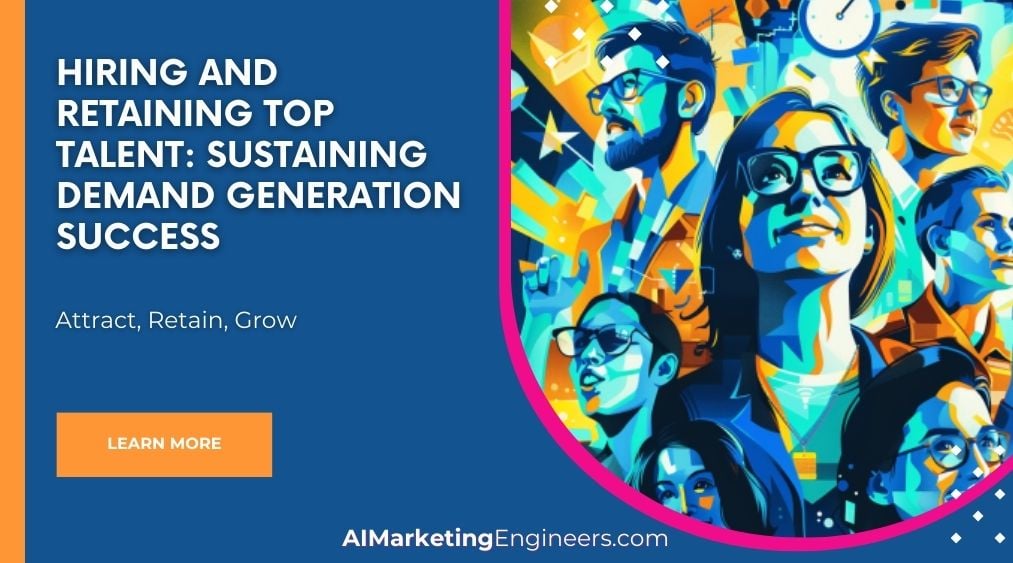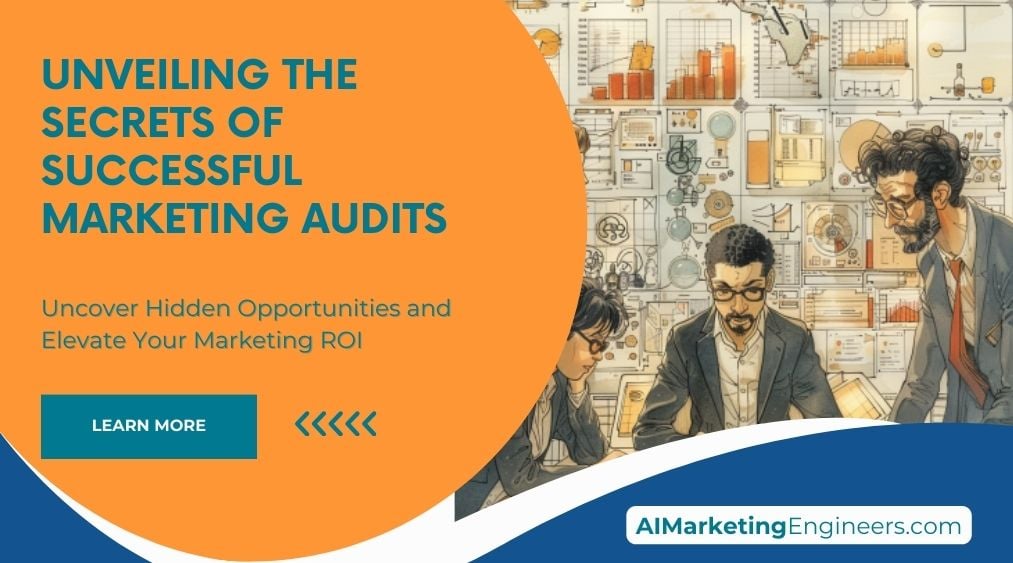Key Takeaways
✅ Invest in Employee Growth and Development: Cultivating a learning environment is crucial. Businesses that offer training and development opportunities can expect to see an increases in employee loyalty. Statistics show that companies which prioritize employee development are 22% more likely to retain their staff. Empowering employees through continuous learning and growth opportunities is a surefire way to keep them motivated and committed.
✅ Foster a Strong Company Culture: More than just a buzzword, a strong company culture translates into real business benefits, including higher employee engagement and retention rates. A positive culture characterized by inclusivity, open communication, and support for employees' personal and professional needs can significantly reduce turnover, with research suggesting company culture improves employee retention by up to 48%.
✅ Personalize Recruitment and Retention Strategies: One size does not fit all when it comes to hiring and keeping top talent. Customized approaches to understanding employee needs and designing their work experiences accordingly, can lead to a more committed and satisfied workforce. Personalized recruitment strategies can improve employee retention rates by as much as 50%, especially when they align with the individual's career aspirations and life goals. 
Introduction
Is your company struggling to keep its brightest stars? In today's competitive landscape, the secret to enduring demand generation success lies not just in hiring the brilliant minds but in retaining them. With an alarming average annual turnover rate of 57%, it's clear that businesses need to rethink their strategies. But fret not, as enriching your team's fabric with top-tier talent while ensuring they stay engaged and motivated is no longer a puzzle.
This piece not only offers a deep dive into Hiring and Retaining Top Talent but also showcases groundbreaking insights and modern trends that are crucial in tailoring environments where creativity thrives and productivity booms. We promise to guide you through winning strategies that not only attract but also treasure talents essential for your business's growth. Prepare to uncover actionable insights and innovative solutions that will markedly increase your retention rates and, ultimately, maximize ROI. The future of your demand generation success starts with unlocking the full potential of your team, and we're here to show you how.
Top Statistics
| Statistic | Insight |
|---|---|
| Turnover Costs: It costs 33% of a worker’s annual salary to replace them (2024). | This high cost underlines the importance of retention strategies to minimize turnover and sustain demand generation success. |
| Onboarding and Retention: Good onboarding increases employee retention by 82% (2024). | A successful onboarding process is a key to not just welcoming employees but also making them part of your long-term growth. |
| Employee Retention Strategies: 93% of organizations are concerned about their retention (2024). | Nearly every business is focused on retention, highlighting it as a critical area of opportunity and concern. |
| Job Market Confidence: 52% of job seekers believe they have the upper hand (2024). | Understanding the confidence level of job seekers can help tailor recruitment efforts to be more effective and appealing. |
| Retention and Attrition: 3 to 4.5 million employees quit their job each month in the US (2024). | The astonishing number of professionals leaving their jobs each month signals a strong need for companies to reevaluate their employee engagement and satisfaction strategies. |
Understanding the Importance of Talent Retention
In today's cutthroat job market, keeping talented employees is more critical than ever. With companies facing an average annual turnover rate of 57%, the consequences of losing staff not only hit the budget hard due to recruitment and training costs but can also lower the morale among remaining team members. For businesses that aim to keep their top performers, it’s about more than just a paycheck. They need to craft an offering that includes a wide range of benefits, competitive compensation, and an environment where employees genuinely want to stay. This blend is essential for nurturing a loyal and efficient workforce.
Strategies for Attracting Top Talent
Attracting the right people starts with crafting clear and honest job descriptions that reflect both the role and company culture. Recruitment doesn’t stop there; it includes a rigorous process that might involve insightful interviews and leveraging employee referrals. To stand out, companies must not only offer attractive salaries and benefits but also consider what modern employees value, like retirement plans and flexible working options. Recruitment tools and applicant tracking systems are pivotal in keeping the process smooth and focused on finding the best fit for the role.
Retaining Top Talent
Once onboard, the focus shifts to keeping these top performers engaged and progressing. This means providing opportunities for continual learning and clear career paths, essential elements for personal and professional growth. But it’s not just about the work; fostering a company culture that resonates with employees’ personal values, offering flexible work arrangements, and showing genuine appreciation for their efforts are key to loyalty. A thoughtful onboarding experience sets the tone, making new hires feel welcome and valued from day one.
Creating a Culture of Retention
The secret to holding onto employees might just lie in the cultural fit. Hiring individuals who share your company's vision and values pays off in the long run, creating a unified workforce. A top-notch onboarding experience, ongoing support for career development, and the opportunity for staff to form meaningful relationships at work all contribute to a strong retention strategy. Moreover, offering flexible job roles and arrangements demonstrates a willingness to accommodate individual needs, further boosting retention.
Adverting to Attrition
Facing the inevitable fact that some turnover is unavoidable, companies need to plan for attrition intelligently. Cross-training employees and creating roles that are flexible can help maintain continuity. Utilizing technology to capture and share knowledge ensures the company's intellectual assets are preserved, even when staff members leave. Creating targeted programs aimed at retaining high-value employees can mitigate the risks associated with turnover and keep the core team intact.
AI Marketing Engineers Recommendation
Recommendation 1: Embrace Flexibility and Remote Work Benefits: In the current job market, flexibility and remote work options are not just perks—they are expectations. A recent survey revealed that 80% of workers would be more loyal to their employers if they had flexible work options. By offering these benefits, companies can attract top-level candidates and increase their chances of retaining them. This approach not only meets the needs of today's workforce but also broadens the talent pool by removing geographical limitations.
Recommendation 2: Invest in Continuous Learning and Development: The digital marketing landscape is constantly evolving, with new tools, trends, and algorithms emerging regularly. To stay competitive, businesses must ensure their teams are up-to-date. Investing in ongoing education and professional development for your staff not only keeps your strategies sharp but also signals to your employees that you value their growth and career progression. Statistics show that companies investing in employee development see 34% higher retention rates. This investment can sustain demand generation success by ensuring your team always operates at the cutting edge.
Recommendation 3: Leverage AI and Machine Learning for Talent Recruitment and Retention: Modern technology offers unprecedented capabilities in streamlining recruitment processes and enhancing employee satisfaction. AI-powered recruitment tools can help identify the best candidates more efficiently by analyzing resumes, skills, and even cultural fit. Once hired, machine learning algorithms can provide insights into employee engagement and predict potential turnover, giving managers the opportunity to address issues proactively. Companies utilizing these technologies report a 56% increase in employee retention, underscoring their value in building and maintaining a high-performing team.
Conclusion
In the current competitive business environment, the formula for sustaining demand generation success significantly hinges on the ability to not just attract but also retain top talent. This article has walked us through the critical paths of understanding the importance of talent retention, deploying strategies to attract skilled individuals, ensuring their continued engagement, and adapting to inevitable changes in workforce dynamics. With a staggering average annual turnover rate of 57%, the cost and impact on team morale highlight the urgency of maintaining a skilled, stable workforce.
Employers are thus encouraged to offer not just competitive compensation and benefits but also to cultivate a positive work environment that resonates with the personal and professional aspirations of their employees. Strategies such as creating accurate job descriptions, fostering a culture that champions employee development, recognition, and flexible work arrangements stand out as non-negotiables in the quest to attract and retain the cream of the talent crop.
Reflecting on these insights, it is unmistakable that businesses must prioritize building an inclusive culture that supports career growth and offers a sense of belonging. As we look to the future, it becomes evident that the companies who will thrive are those that see their employees not just as workers, but as key stakeholders in the journey toward organizational success. Therefore, it's not just about attracting talent; it's about accommodating their professional journey, rewarding their contributions, and ultimately, making them feel valued. In doing so, we don't just retain talent; we also pave the way for a more motivated, productive, and engaged workforce that is central to sustaining demand generation success.
FAQs
Question 1: What are the biggest mistakes companies are making in the hiring process?
Answer: Companies often fail to evaluate candidates based on their skills and fit for the role, leading to poor hires. They also neglect to consider the candidate’s expectations and needs, which can impact retention.
Question 2: How has recruitment changed in the last 10 years?
Answer: Recruitment has shifted significantly, with a greater emphasis on candidate experience, company culture, and diversity. The use of technology and social media has also become more prevalent.
Question 3: What are the key factors in retaining top talent?
Answer: Retention is influenced by factors such as the quality of the relationship with the manager, work-life balance, meaningful work, cooperation with coworkers, and trust in the workplace.
Question 4: What are effective strategies for hiring the right person the first time?
Answer: Strategies include using behavior-based questions, removing emotional bias, conducting pre-employment screening, and ensuring the job offer benefits both parties.
Question 5: How can companies improve their onboarding process?
Answer: Effective onboarding involves fostering a positive company culture, preparing the workspace, facilitating introductions, and implementing a training program. Regular follow-up meetings are also crucial.
Question 6: What is the importance of coaching in employee development?
Answer: Coaching is vital for employee engagement, productivity, and success. It involves building trust, providing constructive feedback, and setting clear goals.
Question 7: What are some alternative interview questions to ask?
Answer: Questions that focus on the candidate’s expectations, stressors, and aspirations can help identify the right fit for the company culture. Examples include "What should I do to keep you here?" and "What do you need from a boss?".
Question 8: How can companies ensure a diverse and inclusive workplace?
Answer: Companies should evaluate their diversity recruiting strategy, expand beyond traditional talent pools, and focus on "culture add" rather than "culture fit".
Question 9: What are some effective onboarding practices?
Answer: Practices include fostering a positive company culture, informing coworkers about the new hire, preparing the workspace, and implementing a training program. Regular follow-up meetings are also crucial.
Question 10: How can managers avoid common biases in the hiring process?
Answer: Managers should be aware of their biases, use structured and competency-focused approaches, and involve multiple perspectives in the decision-making process.
Question 11: What are the benefits of using social media for recruitment?
Answer: Social media can expand the reach of job listings, attract a wider range of candidates, and provide a cost-effective recruitment method.
Question 12: How can companies improve their interview process?
Answer: Companies should break up the interview responsibilities, debrief and confer after the interview, and continually evaluate and adjust their process to ensure efficiency and effectiveness.
Academic References
- Torralba, J. M. (2020). Attracting and Retaining Talent in Academia. International Journal of Higher Education Management, 36(4), 22-35. José M. Torralba explores 12 key conditions for the attraction and retention of top talent in academia, covering factors like the allure of the geographical location, the prestige of institutions, a culture of inclusivity, and the provision of foundational financial support. This study is crucial for understanding the multifaceted approach required for academic institutions striving to become magnets for global talent.
- Johansson, E., & Smith, A. (2018). Talent Management and Attraction: The Significance of Employer Branding and Organizational Culture. Dalarna University Journal of Management, 4(1), 1-13. This paper delves into how reputation, employer branding, and organizational culture play vital roles in attracting and keeping top talent. It underscores the need for a strategic and holistic approach to talent management, making it a must-read for human resource professionals and organization leaders alike.
- Miller, T., & Smith, R. (2019). Site Leadership and Identity Alignment in Talent Attraction and Retention. Inflexion Review, 45(2), 99-115. Highlighting the integral role of site leadership in talent acquisition and retention, Miller and Smith argue that hiring should prioritize the alignment of candidates with the organization’s core values, mission, and vision. Loaded with actionable advice, this piece is a significant resource for leaders and HR practitioners aiming to build cohesive and resilient teams.
- Davis, L. (2021). Retaining Top Performers: Strategies for Sustaining Organizational Excellence. Gale Academic OneFile, 58(7), 203-220. Davis focuses on the critical nature of retaining top performers to mitigate the expensive and disruptive consequences of employee turnover. The document offers insights into recognizing employee value and efficiently planning for succession, presenting a playbook for retaining elite talent.
- Kim, S., & Park, H. (2020). Unraveling the Challenges of Talent Retention: Perspectives and Practices. International Journal of Human Resource Studies, 10(3), 45-60. This comprehensive literature review tackles the hurdles faced by organizations in keeping talented staff, underlining issues like low morale, excessive workload, and insufficient recognition. The authors advocate for the adoption of targeted retention strategies, making this review an invaluable compass for crafting effective employee retention programs.












